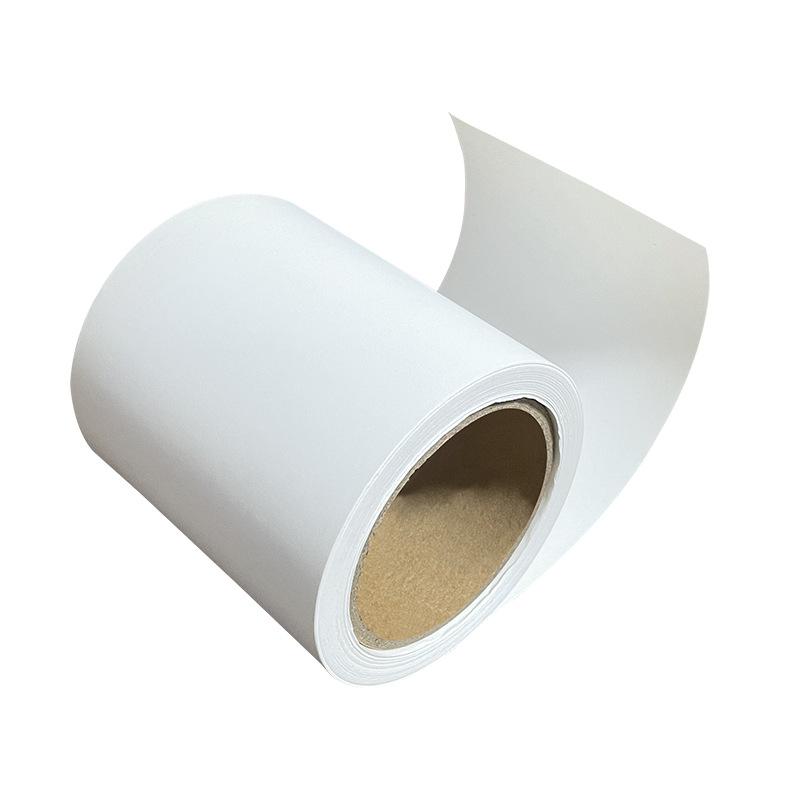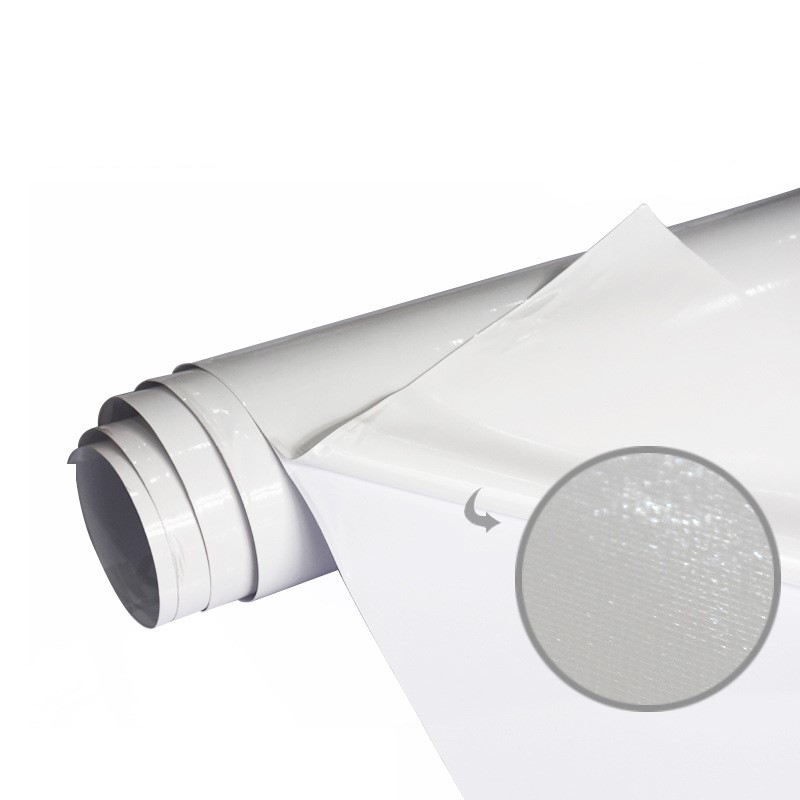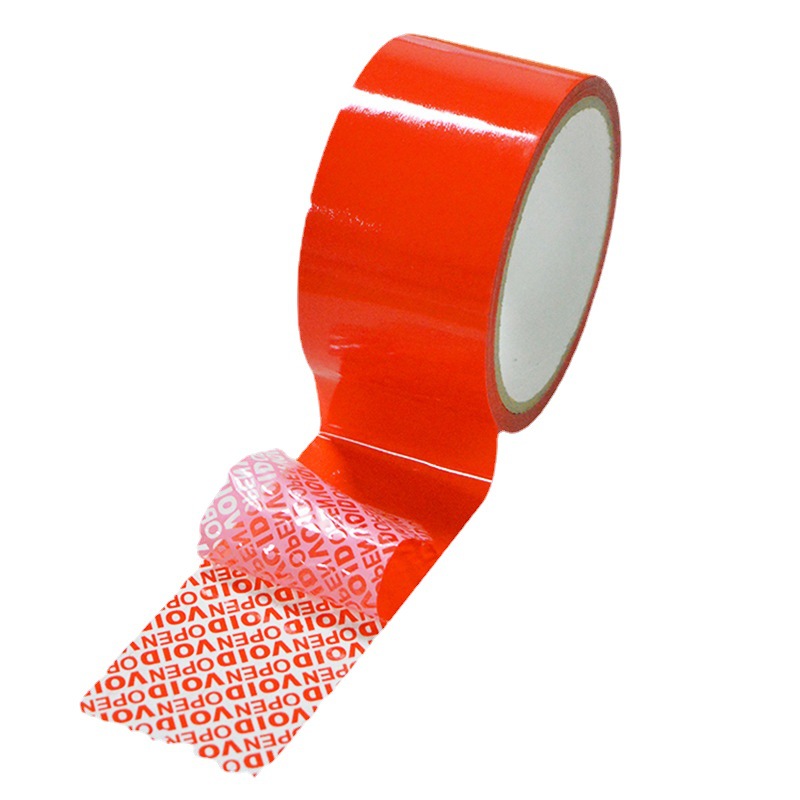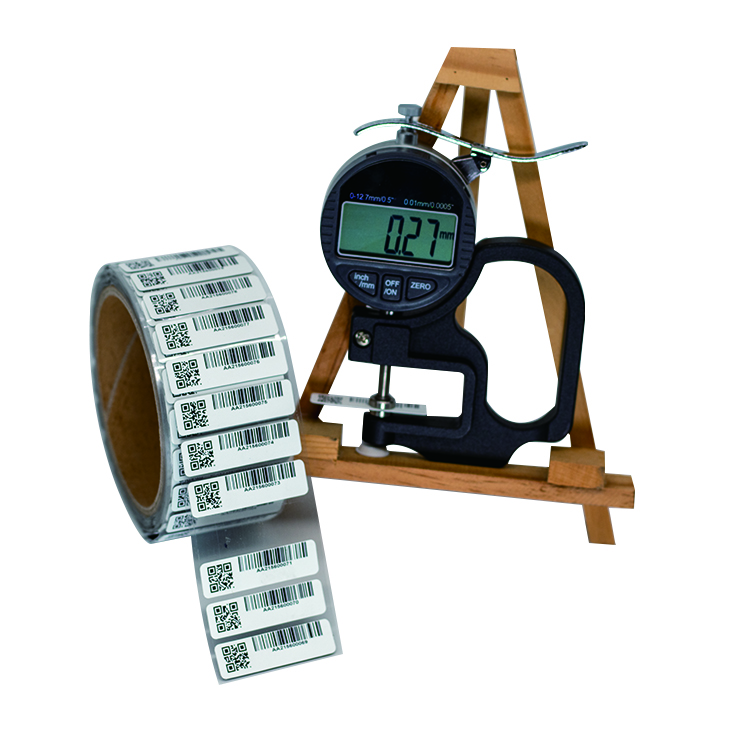The problem of warping when adding copperplate paper labels to daily chemical labels
Ownlikes once encountered a case where a customer reported that the label on the packaging bottle of toilet cleaner started to curl after 24 hours. At that time, the enterprise was very strange. Generally speaking, after 24 hours of labeling, the adhesive of the self-adhesive material would completely bond with the surface of the object being labeled, which should be the time when the stickiness was strongest. Why did it start to curl up 24 hours after labeling? After on-site investigation, it was found that the customer was using labels processed from copperplate paper material
We know that paper has a certain degree of water absorption, and the packaging bottles used as stickers are made of plastic material. After the packaging bottles are labeled, they are placed in the warehouse. According to tests conducted by Xingyue Printing Technology, the relative humidity in the labeling workshop was 55%, while the relative humidity in the warehouse was only 25%. The humidity in the warehouse was significantly different from that in the labeling workshop. Although plastic bottles do not shrink due to changes in humidity, the labels will shrink quickly after being placed in the warehouse due to the rapid loss of moisture, which is the reason why the labels curl up
In fact, the packaging bottles of daily chemical products on the market are mainly made of high-density PE or PP materials, so using thin film adhesive labels of the same material is the most suitable: on the one hand, thin film materials are not easily affected by humidity; On the other hand, the film label made of the same material as the packaging bottle has a shrinkage rate that is basically the same as that of the packaging bottle, so it is least likely to have warping problems
However, toilet cleaner is still a relatively low-end daily chemical product. If thin film adhesive label materials are used, it will increase the product cost to a certain extent. Therefore, it is recommended that companies that must use copperplate paper to process such labels due to cost considerations must cover or polish the labels to reduce the impact of external humidity changes on the label materials
Machinery Industry Label
Precautions for Labeling in the Machinery Industry:
1. When using labels, the label paper should be kept warm (around 20 ℃) so that it can exert maximum adhesion
2. The use of labels should only be applicable in dry weather (i.e. without rain, snow, etc.)
3. Labels should be applied to concrete surfaces with temperatures above 10 ℃
4. Labels should be applied to surfaces suitable for adhesion. The surface suitable for pasting should be smooth, without cracks, holes, and gravel
5. Before pasting, the surface of the object to be pasted should be cleaned first
6. Try to avoid contaminating glue with income and expenses as much as possible
7. After pasting, it is necessary to press the label firmly a few times
Precautions for saving labels in the mechanical industry:
1. Outdoor power labels should be placed as flat as possible. Long term slanted or upright placement may cause glue overflow
2. Outdoor labels for electricity should be placed inside packaging boxes as much as possible. Placing dust and humid environments can have adverse effects on the surface of the tape and the adhesion of the adhesive
3. The retention period after opening is 1 year
4. Try to store in a dry, ventilated, and cool environment
Automotive Industry Label
Labels used in the automotive industry must be able to withstand a series of challenges, including climate, chemical, and various pressures during vehicle use and maintenance. The automotive industry labels are often divided into exterior body labels, accessory labels, tire labels, etc., using materials such as PET, PI, PE, etc., for identification of accessory products. They can print barcodes for data collection, process management, and product quality tracking of automotive parts products. They can be applied to different fields of the automotive industry, including but not limited to brake pads, wheels, tires, belts, hoses, engines, calipers, axles, electronic braking systems, wiring harnesses, plastic internal parts, external parts, and hood components.
Automotive parts labels can be made of materials such as PET, PI, PE, etc., which have stable high temperature resistance, chemical solvent resistance, good adhesion performance, and can adhere to oily surfaces, wet surfaces, rough or dirty surfaces. They are commonly used for identification, warning signs, production process control of accessory products, and traceability of internal components (suitable for thermal transfer barcode printing technology, process management and product quality tracking of automotive parts).
Application areas include but are not limited to: brake pads, wheel hubs, engines, axles, electronic braking systems, wiring harnesses, automotive batteries, new energy vehicle three electric systems, etc.

Types of automotive industry labels
The application of labels on cars has become an essential part, and some barcode markings on cars play an irreplaceable role in quality control traceability, mainly including the following types:
01) Glass label: Glass labels have high transparency and should not easily bubble when attached to transparent glass. They are removable and have no residue. Good glass labels can accompany cars for life, have a beautiful appearance, enhance brand image, and have good applications in 4S stores and glass factories
02) Outer box labels: Outer box labels mainly include logistics labels, plastic box labels, component packaging, etc. They generally have the characteristics of scratch resistance, high clarity, strong adhesion, waterproof and moisture-proof, and are widely used in the automotive parts supply chain, traceability and other aspects
03) High temperature label: As the name suggests, high temperature labels have the characteristic of high temperature resistance. For some circuit boards, metal parts, chemical resistance, wave soldering, reflow soldering and other high temperature processes, they are widely used in automotive engines, air conditioning compressors, etc
04) Fabric label: The strong adhesion of fabric labels is determined by their adhesive properties, but after printing, they can be easily peeled off from low paper (achieving automatic peeling after printing). They have good applications in car seats, foot mats, child seats, headrests, and other areas
05) Oil sticker label: Oil sticker labels also have strong adhesion characteristics, can withstand oil stains, and can stick to areas with oil stains for a long time without falling off. They are widely used in oil contaminated accessories, such as fuel pumps, oil pumps, brake valves, gaskets, etc
06) Cable label: The characteristics of cable labels are that they cannot be sewn, do not leak glue, are resistant to oil stains, and are resistant to friction. They are widely used in cables, wire harnesses, ignition wires, electrical power lines, etc., and can also identify circuits
07) Tire vulcanization label: Vulcanization label is a type of label mainly used on car tires. It accompanies the entire life cycle of the tire, does not deform, does not fade, is waterproof, acid and alkali resistant, and is an essential accessory for car tires
08) Waterproof and oil resistant labels: Waterproof and oil resistant labels can withstand harsh environments and are mostly made of PET material printed with resin ribbon, ensuring the clarity and durability of the identification. They are widely used in nameplates, specification and model descriptions, warning labels, and other aspects
09) Laser etched labels: Laser etched labels have excellent durability, chemical resistance, and environmental resistance. They have excellent performance in barcode tracking and tracing, brand description, UV protection, and other aspects! Mainly used for engine labeling and product traceability anti-counterfeiting
10) Warning signs: Warning signs come in various materials and adhesive formulas, depending on the usage environment. The material of the label can be divided into two forms: lifelong companionship or user tearing. They are widely used in car stickers, decals, body stickers, fuel filler stickers, anti rear end collision stickers, and other aspects

Ship Aviation Label
Navigation aids are the abbreviation for navigational aids, which indicate the direction, boundaries, and obstacles of the waterway, including river crossing markers, coastal markers, navigation markers, transitional markers, head and tail navigation markers, side markers, left and right navigation markers, positioning markers, flood markers, and bridge and culvert markers. It is an artificial sign that helps guide ships in navigation, locate and mark obstacles, and indicate warnings.
Lamp language (light communication) is a universal language for communication between ships, widely used internationally. The term 'lantern language' has a long history. In the era when communication was not yet developed, lantern language played a crucial role in the field of navigation. Using the flicker frequency of lights to transmit information in binary Morse code can help crew members communicate with each other at a greater visual distance.
The signal lights of ships are divided into two types according to their purposes: navigation lights and general signal lights. The turning on and off time of traffic lights is generally based on the time limit of sunset and sunrise.
We offer comprehensive technical support, including free professional labeling solutions, advice on label materials and adhesive selection, as well as online/offline assistance from professional software and hardware engineers. Service email: andy@ownlikes.cn. In pre-sales, we leverage our extensive experience in specialty labeling projects to provide clients with the most suitable hardware solutions. Additionally, all our label barcode printers and scanners come with a three-year free warranty, demonstrating our confidence in our products.






This site is protected by reCAPTCHA and the Google Privacy Policy and Terms of Service apply.